Remote Work-Life Balance: Creating a WFH Life that Works for You

Just a few decades ago, a typical day at work for most people involved a congested commute, a cold office and plenty of in-person meetings. But flash forward to today and the typical worker is rolling out of bed right before their workday starts, walking a few steps into their home office and getting started on a project while they’re still in their PJs.
The remote work boom has officially arrived — at lightning-fast speed thanks to the pandemic — and workers across the country are relishing in the freedom and added comfort it provides. Some are even changing their home to fit their new needs. But with a huge shift in how the average American logs on, comes a shift in how they log off as well because after all, it’s hard to draw a line between work and home when they take place together.
To help remote workers create a well-balanced work-from-home life, we’ve broken down plenty of science-backed tips to make the most out of your day and learn how to disconnect once and for all.
The benefits of working from home
While you may have seen the influx of negative press about working from home just a few months into the pandemic, in reality, there are a lot of benefits to this new way of working. From the environmental impacts to improved mental health, below are just a few of the data-backed benefits of switching to remote work.
- Working from home can increase productivity by 77%.
- Remote workers save an average of $94 on fuel each week.
- 86% of professionals believe a remote job would help lessen their stress.
- Making WFH options available after the COVID-19 pandemic may help reduce burnout over the long term.
- The longer your commute, the less likely you are to have a good night's sleep, a crucial part of maintaining your mental health.
- Long commutes are also associated with high blood pressure and BMI.
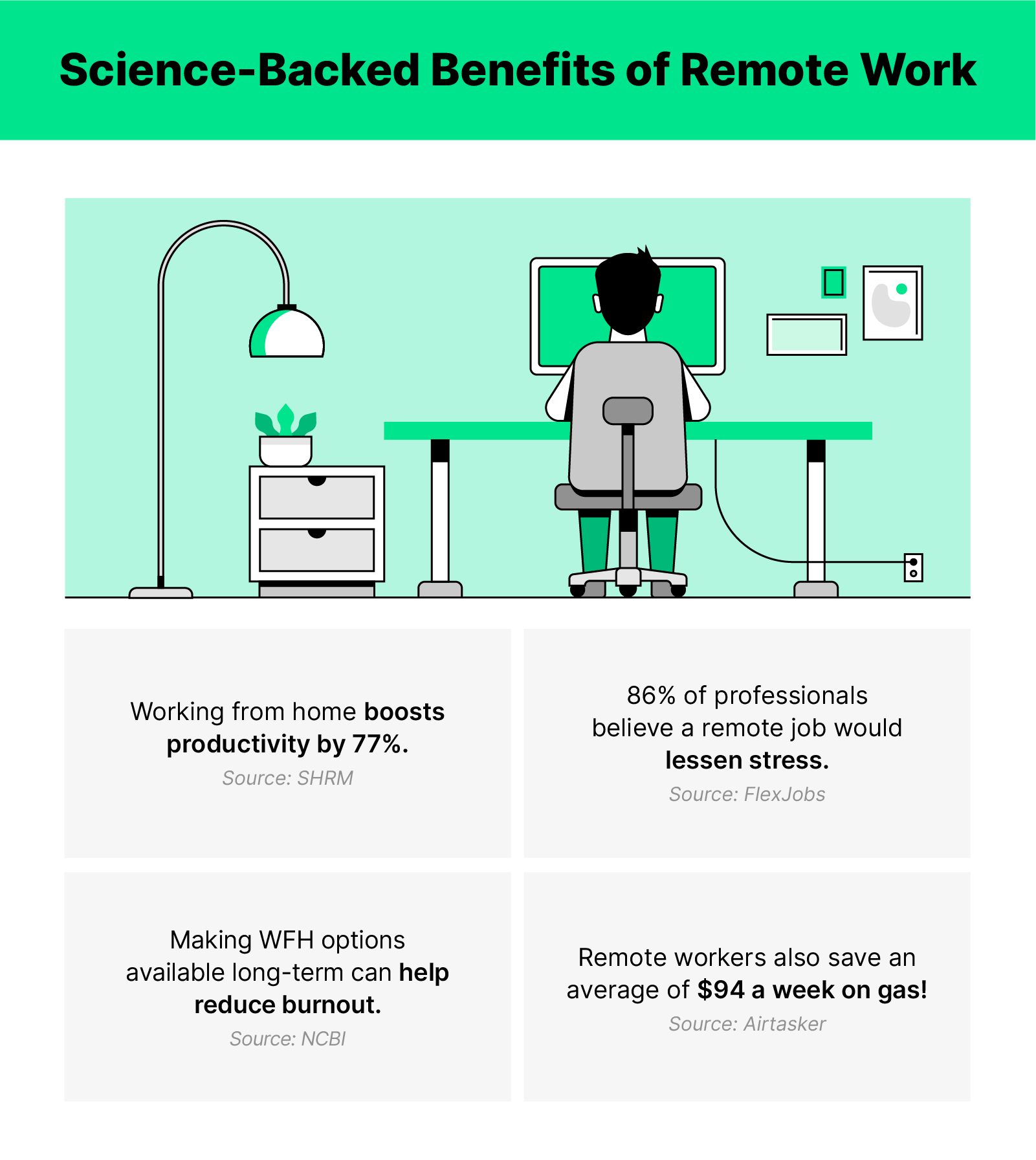
7 science-backed tips to help you love remote work
Zoom fatigue, work-from-home blues, digital exhaustion...whatever you want to call it, there’s a lot of different ways to describe feeling down when working remotely. But with just a few tweaks to your daily routine, you can easily find yourself enjoying this new environment more than you ever have before. Try out any (or all) of the tips below and let us know how they work for you.
1. Try out a fake commute
While you may not miss the hours spent sitting in rush hour getting to and from work every day, it turns out your commute had some perks that you’re missing out on as a remote worker. Luckily, you can take advantage of these benefits (while still avoiding traffic) by trying out a fake commute.
A fake commute is a daily activity that you work into your schedule to help transition between working and non-working hours. Whether it’s a walk around the neighborhood, reading a chapter of a book, taking a workout class or spending just a few minutes in meditation, a fake commute can help make the transition between work and play a bit easier. The benefits of fake commuting include reduced stress and increased creativity, as you’re giving your brain an opportunity to reset and get ready for the day or night ahead.
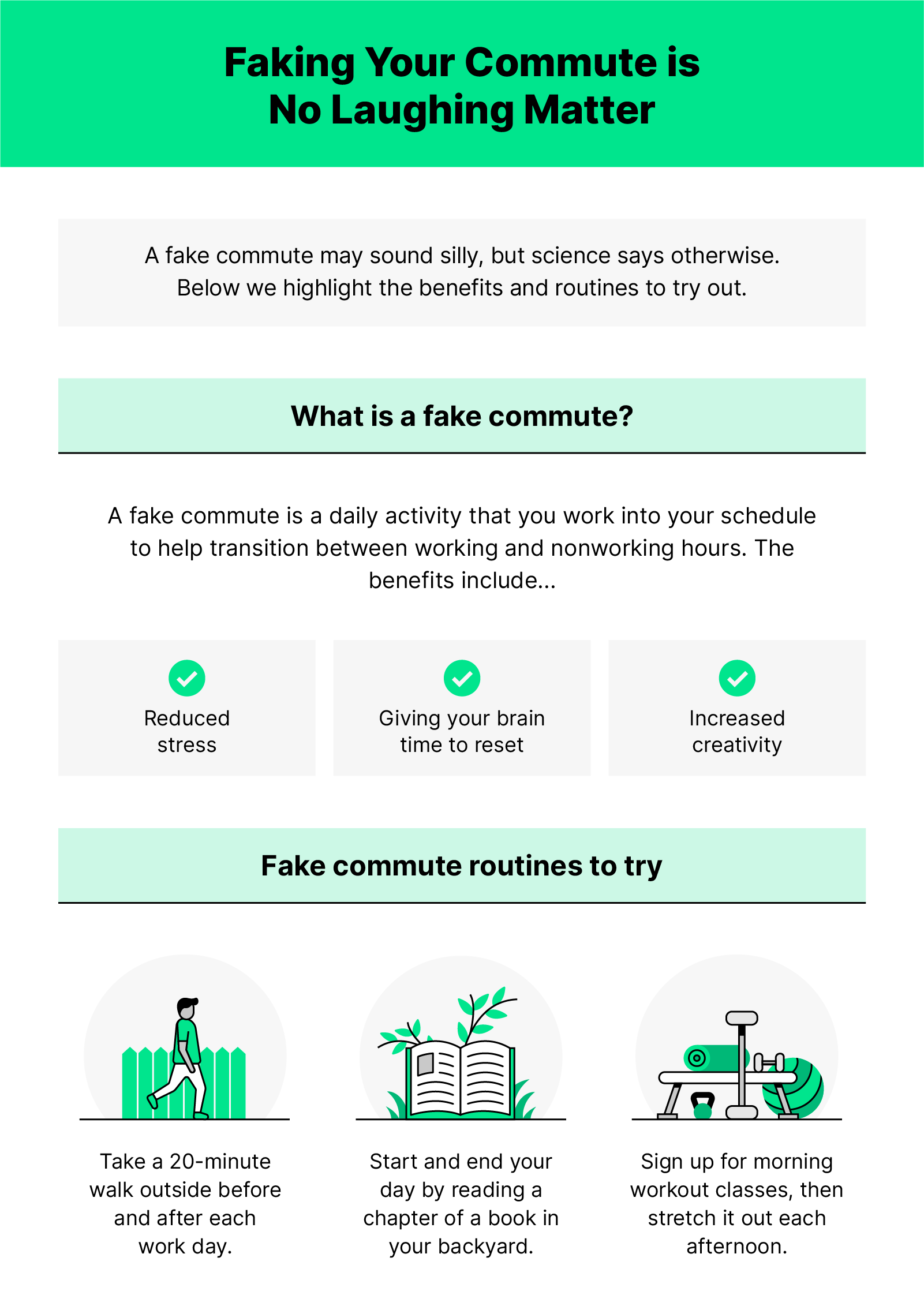
2. Create a routine
Routines can be a comforting and rewarding thing to implement into your work-from-home life. From a ritual of making coffee and enjoying the sunrise each morning to taking breaks at the same time each day to clean your house, there are plenty of routines remote workers can try out to improve their well-being.
Sticking to a consistent schedule in terms of when you wake up and go to bed, when you work and how often you exercise or socialize can lead to improved sleeping patterns, stress levels and overall health. In fact, routines are so powerful that they’ve also been shown to ease bipolar disorder and aid in recovery.
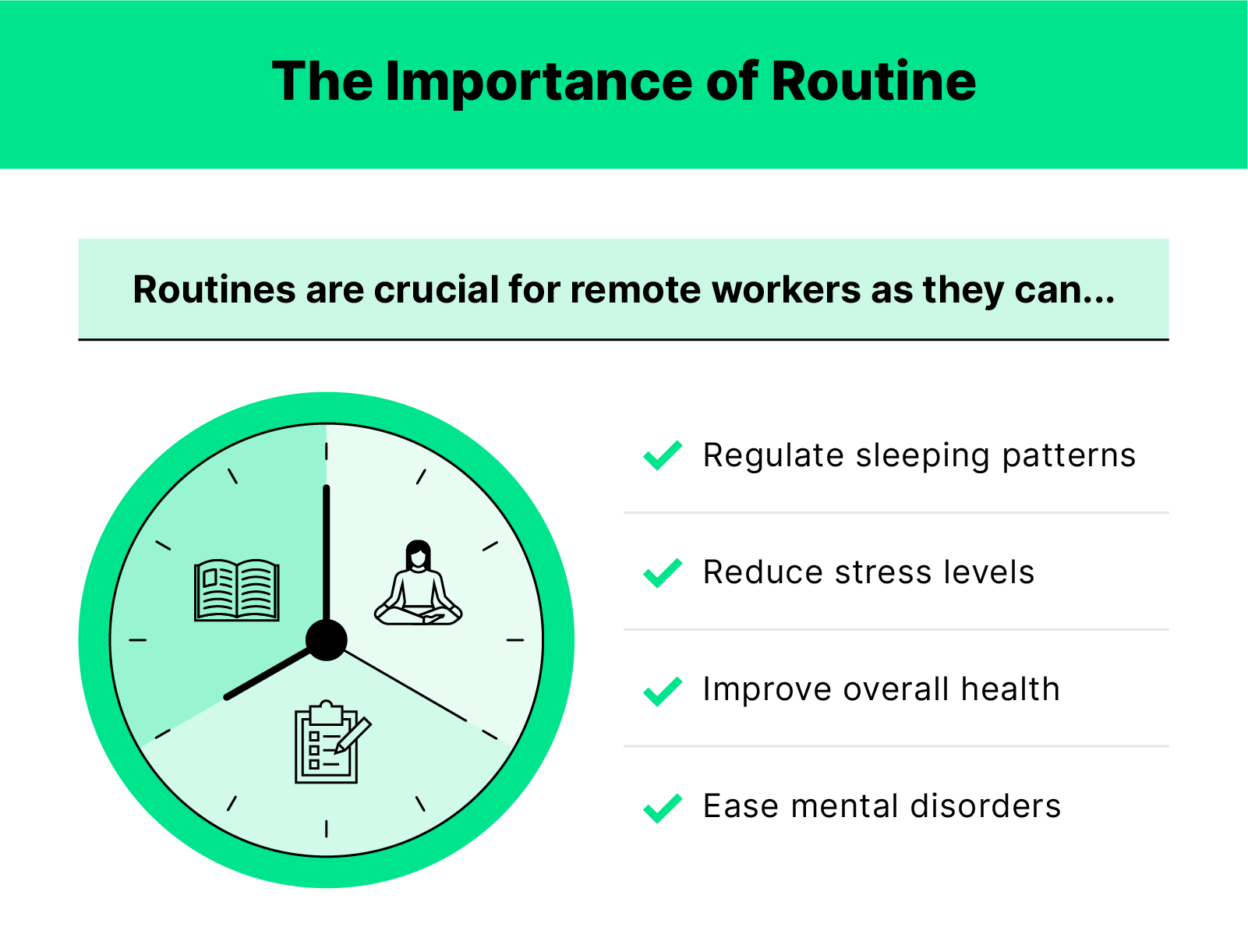
3. Stay social
Without watercooler talk, office gossip over microwavable meals and walks around the complex to chat about weekend plans, you may find yourself feeling isolated when working remotely. And that’s totally normal! But given how important social interaction is to your mental health — it can improve your happiness, memory and cognitive function as well as help you live longer — there are steps you should take as a remote worker to keep your social calendar bustling.
To ensure that you stay social when working remotely, set up recurring meetings (in person and outside if everyone is comfortable with that or over video chat) with your coworkers. Whether you opt for venting sessions, happy hours, a book club or a group exercise class, putting time down on your calendar to meet up with others will give you something to look forward to and provide a much-needed boost of team morale. In addition to scheduling time with your coworkers, make sure to plan plenty of social time with friends and family outside of work to keep your mental health in tip-top shape.
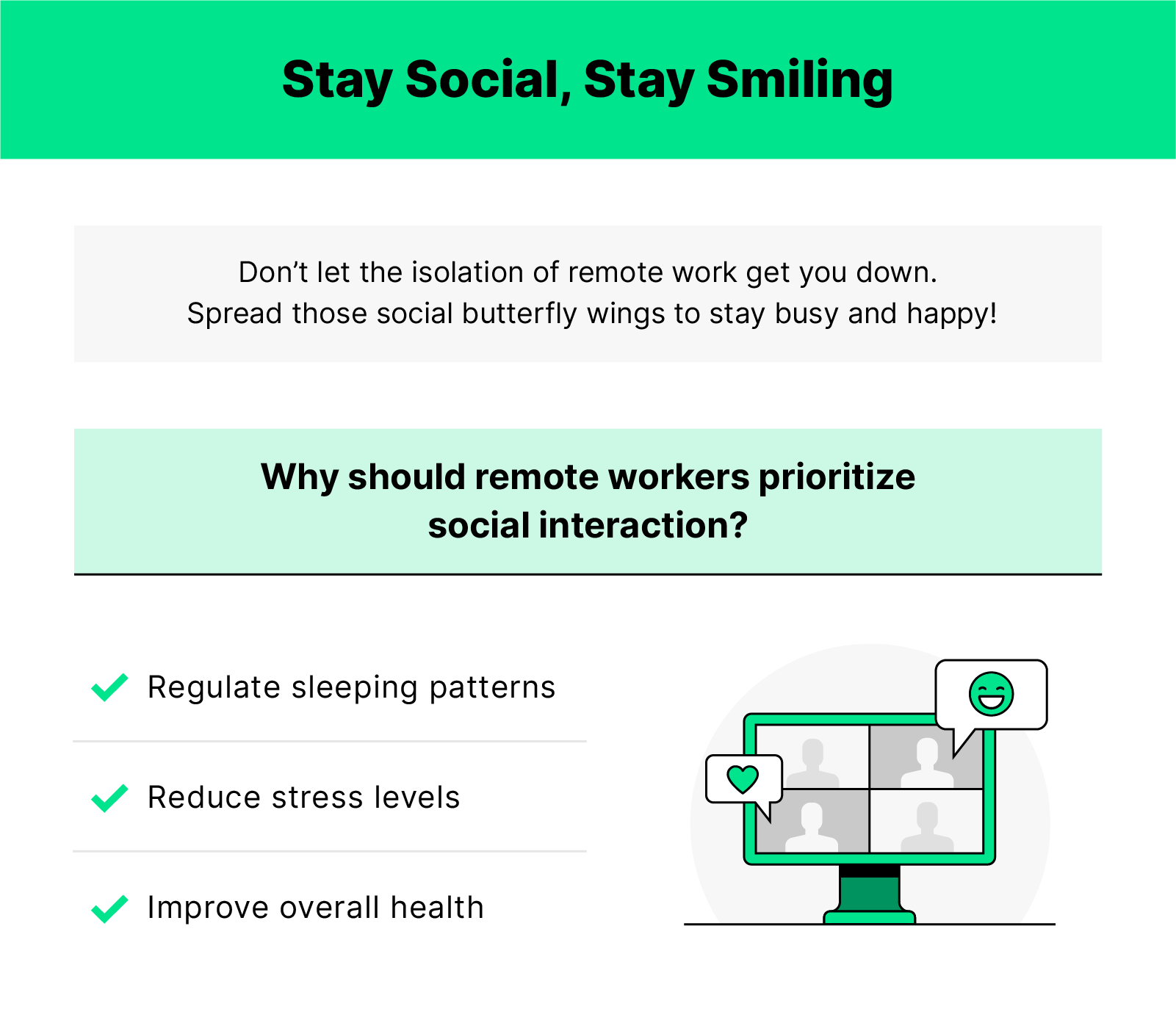
4. Spend time in nature
The next time you get anxious at work or find yourself feeling depressed, try venturing outside. Time and time again, studies have shown that time outdoors is good for both our physical and mental health. While one study proved that a 50-minute walk in nature reduces anxiety and rumination, another showed that time in nature helps increase cognitive function and control. In addition, just 10-30 minutes of midday sunshine a day provides enough vitamin D to fight off disease and increase calcium absorption rates.
Reap the benefits of sunshine and nature by working in some outdoor time every day. Try taking a walk around the neighborhood, a trip to the dog park or a new part of your town to take advantage of all the benefits nature has to offer.
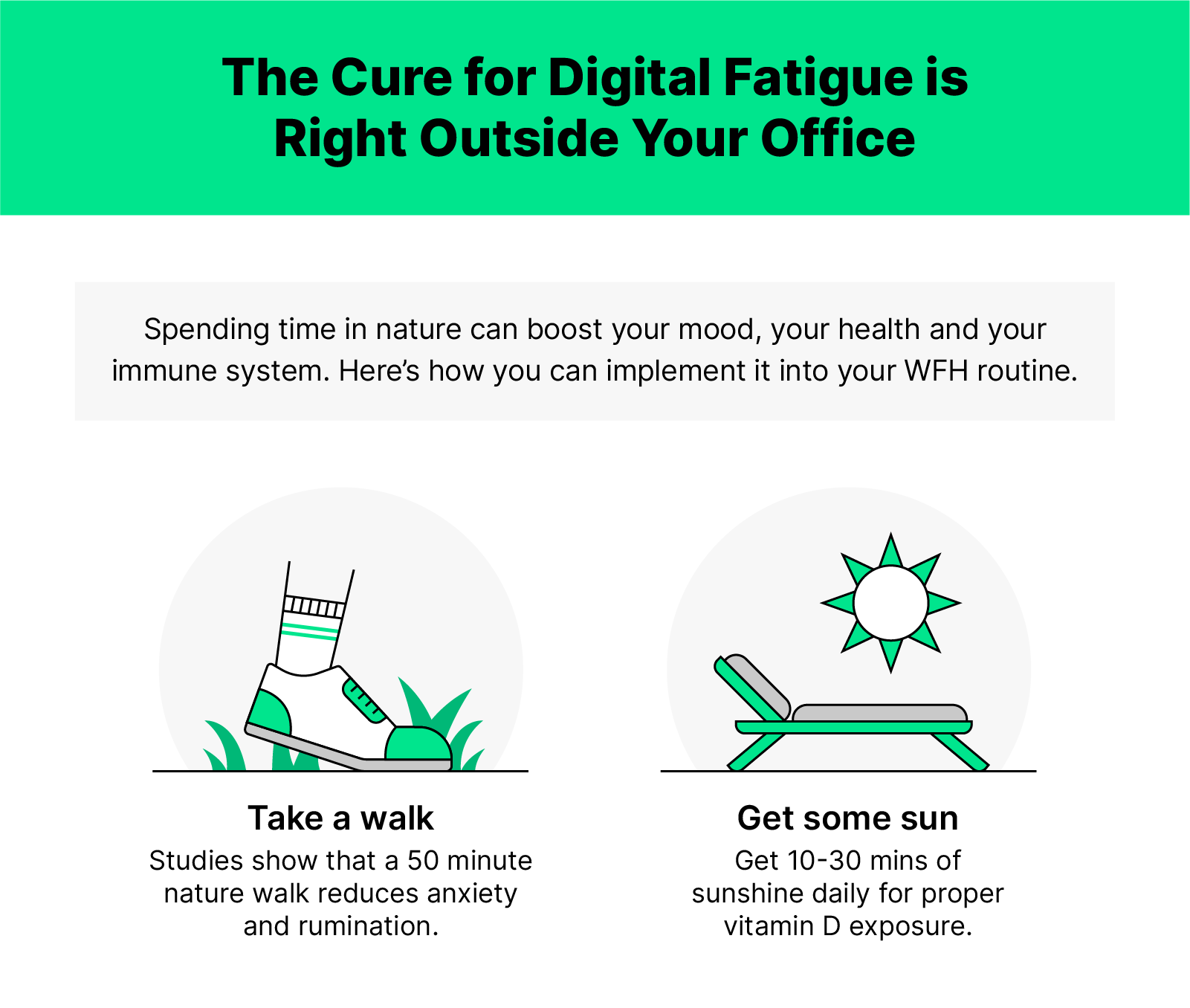
5. Learn how to say “no”
Saying no is difficult for everyone since it can potentially lead to a slowdown in your career. But sometimes, saying no is the perfect way to set boundaries, give yourself downtime and actually do better work over the long term. But actually saying no when an opportunity presents itself is easier said than done, especially for women, who are more likely to get promotions or raises when they say yes while men will receive accolades regardless.
To teach yourself how to respect your own boundaries and say no when needed, start small. This means giving a polite but firm no to the salesman that comes to your door or the friend that asks you to dog-sit for the 100th time. Then, you can transition this practice into your working environment, offering thanks for the opportunity but politely declining. You can also try switching up your wording, as a study has shown that a simple switch from “I can’t” to “I don’t” improves feelings of empowerment and creates a pattern of goal-directed behavior.
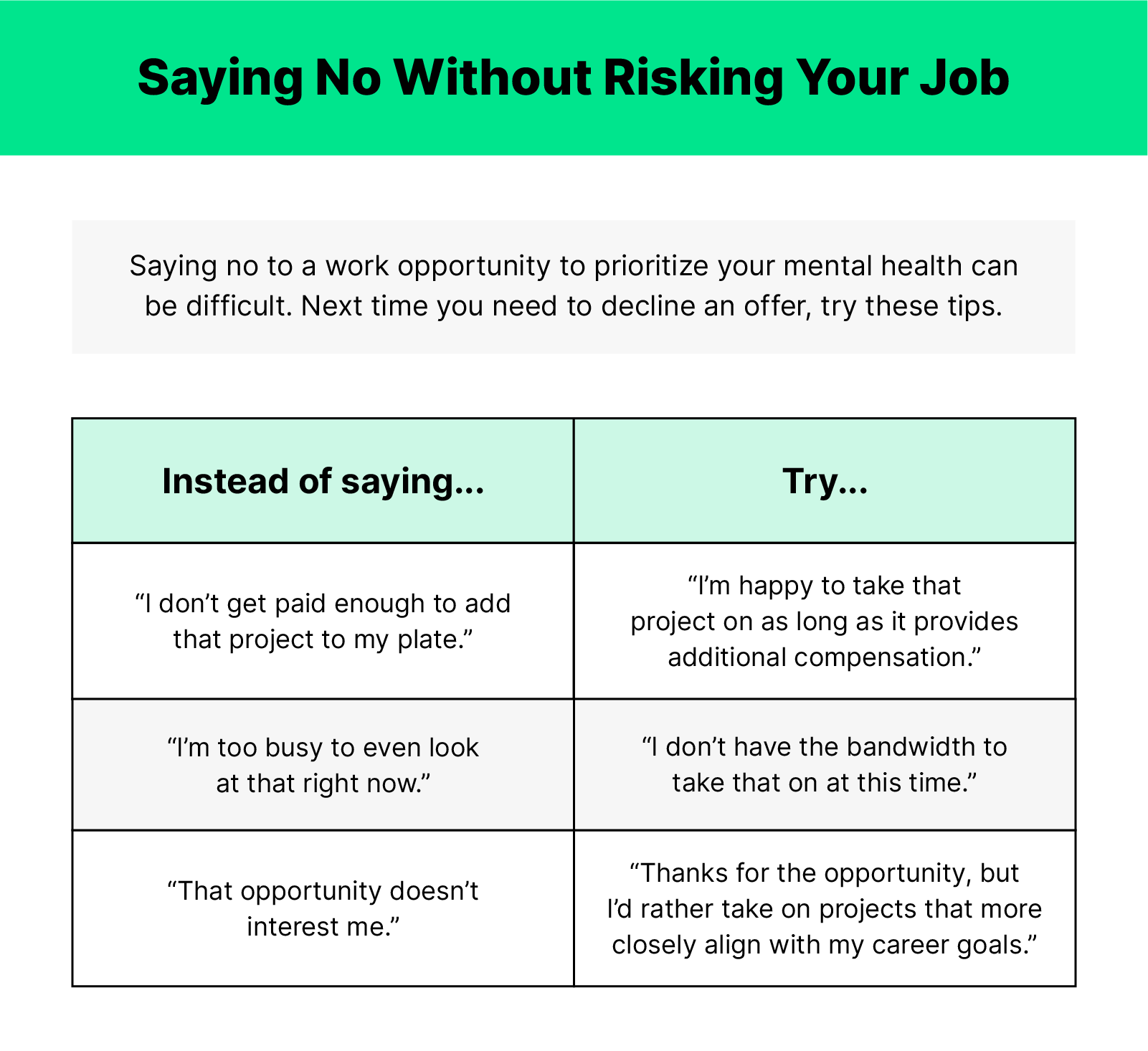
6. Get regular exercise
Your health teacher was onto something when they stressed the importance of getting consistent exercise. Outside of the myriad of physical benefits, a regular exercise routine can reduce anxiety and depression and can even help improve issues such as low self-esteem and social withdrawal. Regular exercise has even been shown to lead to healthier eating habits, providing a whole host of additional health benefits.
Working exercise into your remote work schedule is especially important, as a recent study has shown that sitting too much can have negative effects on overall health and well-being.
If you’re new to regular exercise, don’t fret. There’s no need to sign up for a marathon or gym membership to reap the benefits, as something as simple as a 30-minute walk or low-impact yoga class can make all the difference. Whatever your exercise of choice is, sticking to a schedule is key to seeing long-term health improvements.
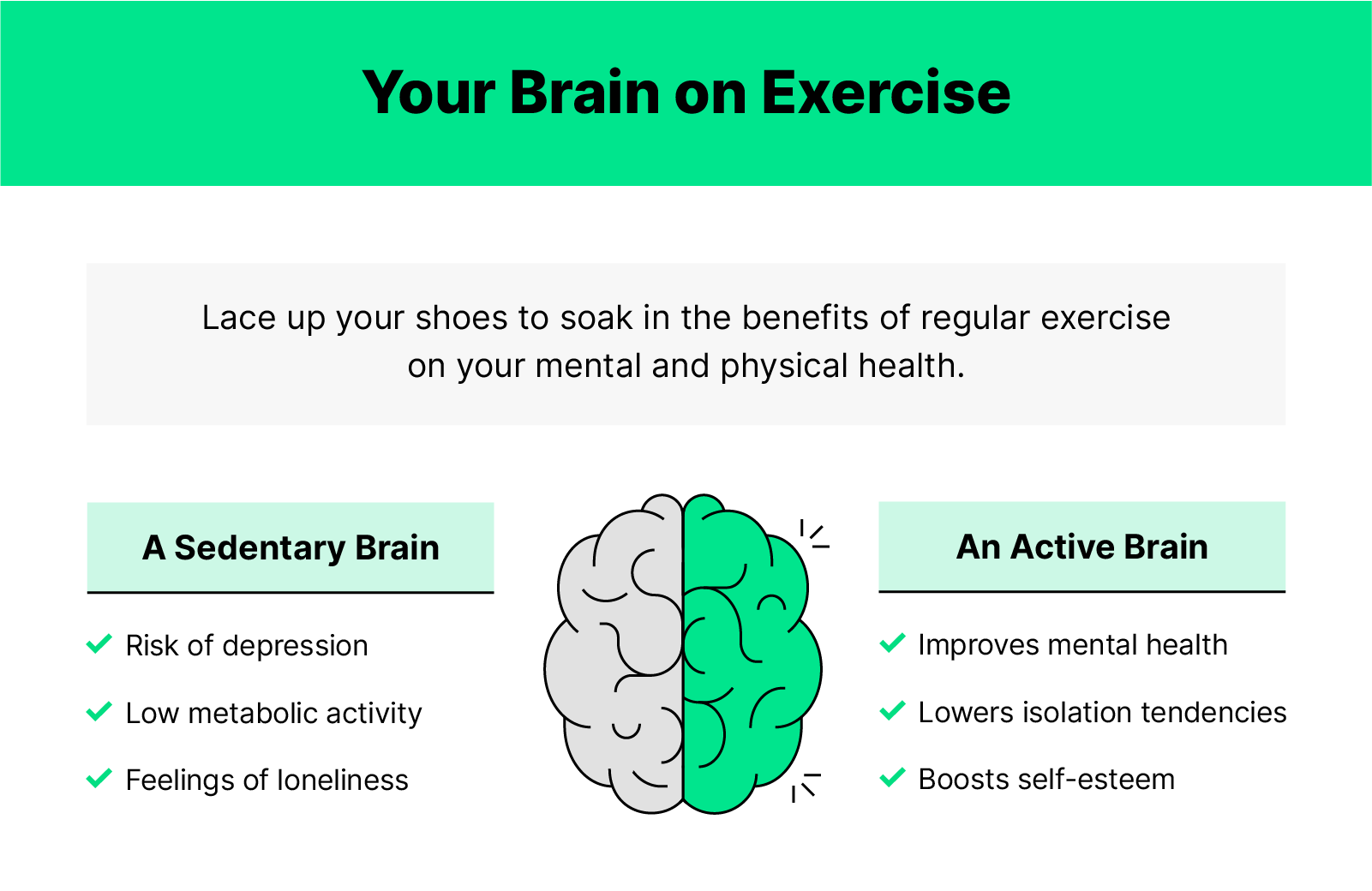
7. Ditch multitasking
Multitasking is a common practice of workers in a variety of industries, whether they work remotely or in an office. But according to several studies, multitasking is not as productive as it seems. One study found that the human brain is not wired to perform more than one task at a time and that multitasking (or task switching) leads to longer completion times and a higher number of errors. In fact, a study by Psychonomic Bulletin & Review found that only 2.5% of people are able to multitask effectively.
To ensure your working hours are as productive as possible, try to commit to several hours of “deep work” every day. A term brought to popularity by Cal Newport, deep work is uninterrupted time focused on one particular task. By turning off all other notifications and removing distractions, you can get more work done in a shorter amount of time before moving on to the next task.
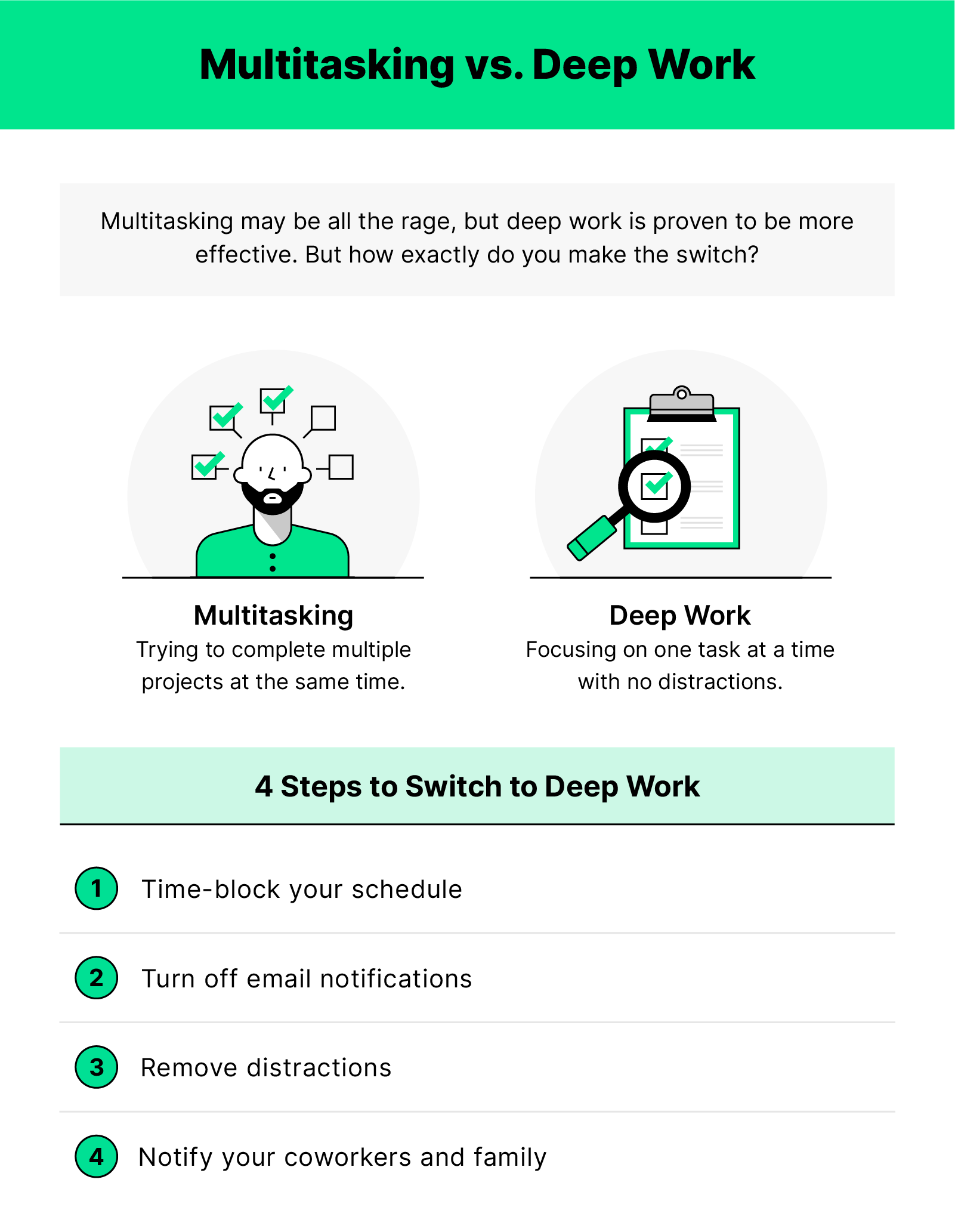
Upgrading your WFH office
Sometimes, the most well-balanced schedules aren’t enough to ward off bouts of depression and anxiety. When that happens, there are still a lot of tools at your disposal to start feeling better. In addition to more traditional avenues like talk therapy, medication and meditating, you can also get a mood boost by upgrading the space around you to better fit your needs.
As we’ve mentioned on the blog before, updating your home can improve your mental health — and that extends far beyond your typical bedroom makeover for a better night’s sleep. Updating your home office to include wellness add-ons like plants, calming colors, comfortable chairs and soothing scents can make a world of difference in how you feel when you start your work day. Even moving your office to a room with more natural light can bring about positive improvements such as reduced eye strain, headaches and drowsiness. And the best part? Some of these devices can even make your job easier.
Office tech to make your life easier
If you’ve ever gotten a crick in your back after a long day at your desk or gotten sidetracked dealing with chores in the middle of your workday, you just might be a remote worker. Though WFH life has a lot of benefits — just like everything — it has pitfalls as well. Luckily, there are a whole host of smart home devices that were created to solve just about every WFH woe and help you get back to peak productivity.
- In-House Cameras
- To help you keep an eye out on your little ones (or four-legged friends) while you are at your desk.
- Light Therapy Lamp
- Reduce depression and Seasonal Affectiveness Disorder (SAD) symptoms with a light therapy lamp, perfect for those whose offices don’t get a lot of natural light.
- Outdoor Motion-Sensored Cameras
- Get notified when there is movement around your house without having to look out the window with smart cameras that turn on at the slightest movement.
- Smart Lights
- Connect your office lights to your phone to easily set the brightness level or color to match your mood and boost concentration.
- Smart Thermostat
- Never run off for a jacket mid-meeting again with a smart thermostat, which you can adjust to your perfect temperature straight from your phone.
- Smart Windows
- Reduce street noise to help you focus on the task at hand by installing smart windows in your office.
- Standing Desk
- Work out a bad back with an electric standing desk, which can sit at any height for optimum comfort.
- Video Doorbell
- Talk to a delivery driver or salesperson who comes to your door from any room in the house via phone or tablet.
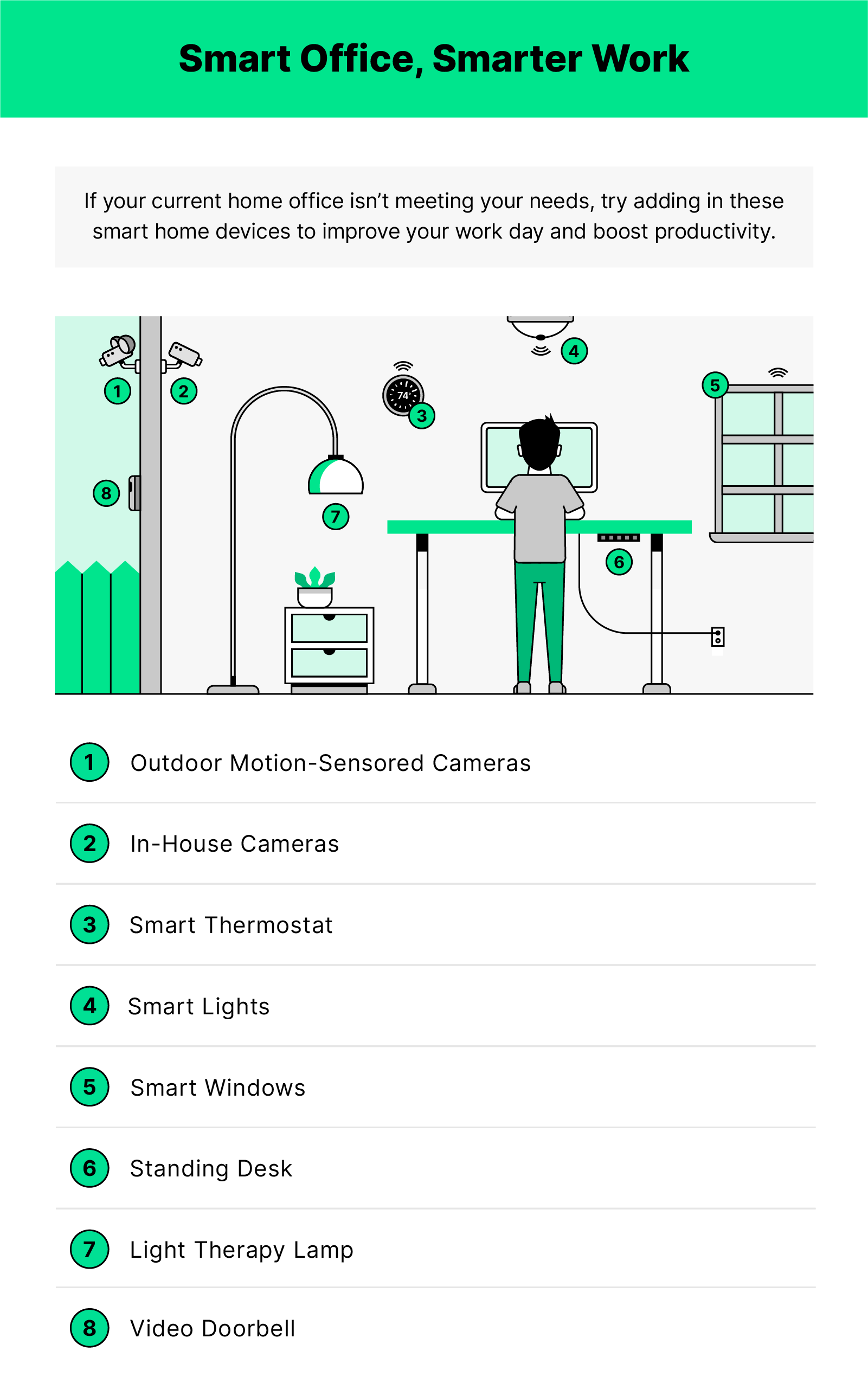
Mental health and your job
In addition to mixing up your routine, another way to ensure your mental health is prioritized when working from home is by having honest conversations with your employer. While taking time off has been proven to increase productivity, lower stress and improve mental health, the idea of “mental health days” didn’t really take hold until the last few years. But now, mental health is a huge priority for many companies, with major corporations like Starbucks and Target offering more mental health days and services for their employees.
Thanks to this recent trend, talking to your manager about your mental health no longer has the same stigma attached to it as it once did. To make sure lines of communication stay open, make sure to set up monthly meetings with your manager to discuss your workload, work-life balance and stress levels. Consider what benefits would decrease your stress the most and ask for them, whether it's changing your hours to better suit your family’s schedule or going remote if you aren’t already. You just might be surprised at how accommodating your company will be.
This same conversation should extend to your family, especially if you work from home full-time. Since remote work can often lead to a blur between working hours and family hours, it's important to set boundaries so you have time to get things done. Consider setting “focus hours” where your family knows you aren’t to be disturbed, invest in noise-canceling headphones to help you work smarter and create a signal so everyone knows when you’re in a meeting.
Home insurance and remote work
After all this talk about how to keep your mental health in check while working from home, we wouldn’t be doing our duty as a home insurance company if we didn’t talk about how your insurance factors into your life working from home.
Whether you started working from home during the pandemic or have been working from home for years, it’s a good idea to look into how much personal property coverage your current home insurance policy has. Ensuring you have enough coverage for all your tech is crucial to your long-term financial health and can help prevent you from having to pay out of pocket should something happen to your devices.
On the other hand, if you’ve just started a home-based business, there are additional insurance factors you’ll need to take into account. Depending on the type of business you started and how it operates, you may need to purchase separate policies such as business property insurance, professional liability and product liability coverage.
From remote workers and business owners to stay-at-home parents and virtual students, there’s no denying that all of us are spending more time at home than ever before. But with the right home insurance policy (read: lots of tech coverage), this shouldn’t be cause for concern. Contact us today to learn how we stack up to the competition.




